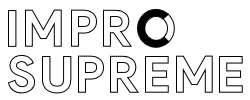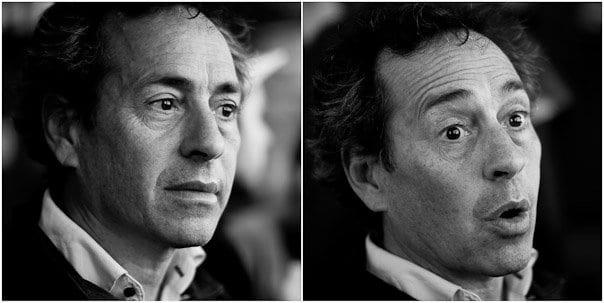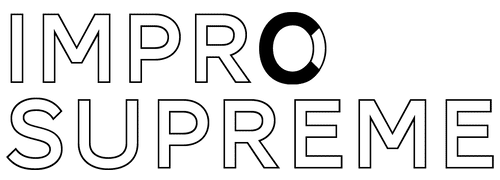I never looked for a mentor. The thought of having one never occurred to me – not before I realised that I actually did have one.
Here’s the story of how meeting my mentor Ira Seidenstein was essentially about meeting my creative self, the world and others – through clowning.
The text is a slightly modified and expanded version of my foreword to Ira’s book Clown Secret, published in 2018.
Something Like a Chance Encounter in Paris
The first time I met Ira was in spring, 2008, at La Fourmi, my local go-to café. We had e‑mailed briefly the day before. He was passing through Paris and a friend had given him the contact of my improv theatre company. I was curious about what he had suggested to us: ‘a potpourri of workshops on physical acting, slapstick and clown’.
I hardly knew anything about either of those things then. But there was something about the way Ira presented his work that intrigued me. I looked up his website and read through a few of his articles.
It was all very upfront. Not someone trying to sell himself, just intellectually honest and thought provoking content – clearly based on a long and varied career.
Within a minute from sitting down with him at the café I had a strong impression that I was in front of a man who really knew what he was talking about.
Like for real.
And those are two words that are worth emphasising when it comes to Ira and his work: for real.
All You Need to Know to Improvise
I can not remember what we talked about. Ira most certainly asked me more questions than I asked of him. We must have talked about improvisation. I thought I knew something about it. Which I did, of course.
But a week or so later, after a first introductory workshop with Ira, I clearly understood that knowing about something is not at all the same as knowing it.
In that short three-hour session my mind reached down and touched base. It was like standing on solid ground after being at sea. I finally knew what improvisation was. Ira spelled it out:
‘Make a pause, and in that pause there is a binary choice. Either you continue what you were already doing or you make an adjustment. It’s one or the other.’
That blew my mind.
It was so incredibly simple and obvious. No one else had told me that before.
None of the acting or improvisation teachers I had met. Nor was it written in any of the many books on improvisational theatre I had read. I surmised that either these teachers did not know it or they did not care to explain it – and I did not know which was worse.
Please, Can I Have Some More?
At any rate, I knew for sure that this Ira Seidenstein knew something fundamental. I felt certain that he was teaching us something that he really knew. Something he knew how to do himself.
There was no pretending. No paradoxical teaching. No mystification. No bullshit.
Here was someone who laid all the cards on the table right from the start. Someone who cared about what was true. Here was someone I could trust.
My intuition told me I needed to learn more from this man. And so I began organising workshops for him in Paris whenever the occasion arose. I still had no idea what I was in for or who I was working with.
All I knew was: he knows more than I do and there is something very special about the way he works.
It was not until January 2010, at the end of Ira’s first Quantum Clown Residency in Brisbane, that I understood why I had invested myself in his work and indeed gone all the way to Australia – on the other side of the planet! – to attend a proper three-week workshop with him.
It was to honour my own creativity. As simple as that. As difficult as that.
Honour Your Own Creativity
For what does it actually mean to honour one’s own creativity? It is something that goes way beyond and deeper than simply being creative. Coming up with stuff is not enough. Resolving problems is not evolving. Not as a human being.
What I have come to understand after ten years of investment in Ira’s work is that honouring my own creativity means creating – or recreating – myself.
It means becoming whole. Not being whole, but becoming whole, and as such, being of a piece, being of the world, being wholly (not holy!) in the world as it is, being as one is becoming in the world.
I remember those summer mornings in West End, Brisbane, 2010. The bright early light, the exotic sounds, the warm and humid air, the unusual smells. But most of all the feeling that I did not want to get out of bed and go to the workshop.
I was afraid. Each and every morning.
Because I knew that once I stepped into that space there would be nothing to hide behind. Or at least there would be no point in trying to. Because Ira sees everything. Nothing in the workspace escapes him.
Dare To Be Seen
For those of us used to maintaining our façades it is very destabilising when someone sees right through them all. I was certainly not used to being truly seen.
Well of course! I had never actually shown myself except by chance or mistake. I had a very clear feeling of being at a threshold. I patently knew that there was only one way to go. Forward.
I had to get up there and stand before the eyes of the world with nothing but myself. I had to face myself. I did not want to. But I did it anyway. Every day.
I returned to Brisbane in January the next four years and Ira would come to Paris once or twice per year. I had begun practising his exercises regularly and eventually created my own solo show to try these things in public.
It was during that period that I started recognising him as my mentor.
Take the Ball and Run
Today I am proud to be his main associate and happy to also call him my friend. My understanding of his work now is this:
If you invest yourself fully in Ira’s method, then it is not his any more, it is yours.
Over the years, I have observed how not just what Ira does, but what he is, scares some people and makes others angry. He sees – and he says what he sees. He is free – and he insists on you taking your own freedom. Even if you do not want it. Because he does not want to be in control of you.
As a teacher and director – and often even just as a person – he offers more than most of us are able or willing to deal with. He offers us an opportunity to deal with ourselves.
This offering is fully encapsulated in his workshop template The Four Articulations, aka Push-ups for Clowns. When you engage with those exercises you engage with yourself. You have to. And what that means is:
You have to feel and to see the world you are in. And to recognise others in this world as feeling and seeing: seeing and feeling you.
Simple. Not always easy.
But possible for just about everyone with a bit of discipline and regular practise. And a sense of humour of course! If it’s not joyful or leading to any joy, you are missing the whole point.
Meeting My Mentor – The Final Conclusion
To sum it all up, I would say that meeting my mentor was essentially about meeting my creative self, the world and others. And learning to enjoy it all at the same time.
What more can you ask?
…


